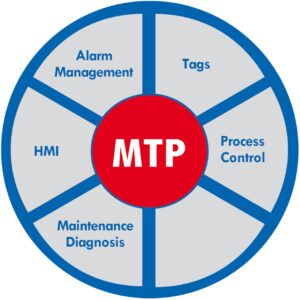Ethernet-APL (Advanced Physical Layer) on its own is an incredible advancement in industrial networking. However, it is not quite a complete solution. As such, many features must be provided at the protocol layer –not at the physical layer. PROFINET already provides these features, and more, to operate a plant at maximum efficiency. Now, let’s look beyond what’s possible at the protocol level. Spoiler alert: Artificial Intelligence will not be discussed.
Protocol Features = Operational Efficiency
To provide a complete Ethernet-based industrial networking solution for process automation, features must be implemented by the protocol to solve operational challenges. Features of note include dynamic reconfiguration, status-based diagnostics, simple device replacement, standardized data formats, high availability, redundancy, and time-stamping. Implementing these features into PROFINET has come after decades of experience with PROFIBUS PA. The goal here is to make operating the plant as safe and as efficient as possible.
Information Modeling + Orchestration

At the device-level we have PA-DIM (device information model) where we’ve mapped the available process variables from a variety of devices to the OPC UA information model. Examples include flow, pressure, and temperature. This standardized data format is helpful during commissioning, maintenance, and optimization. The information model is self-describing, machine readable, and semantically rich. Data access is thereby simplified.

At the machine level we have MTP (Module Type Package). The concept is ‘like’ PA-DIM or a GSD (general station description) file. MTP is a standardized non-proprietary application-level data description of autonomous equipment assemblies. Examples include prefabricated process systems and modular skids. The MTP file can be integrated into a Process Orchestration Layer to more quickly create a process sequence, for example, to complete a recipe. Although developed for process industries, MTP has gained attention from verticals in hybrid industries and discrete automation.
Accessing and Utilizing Trapped Data

The beauty of Ethernet-APL is it’s just that: Ethernet. This means multiple protocols can coexist plainly on the same wire. The Profinet protocol runs in parallel to any Ethernet-based protocol like OPC UA or MQTT. There is a desire within NAMUR (process control user group) to leverage these technologies as a second channel. Keep the automation infrastructure in place and access this information outside the traditional hierarchy via a data diode –NAMUR Open Architecture (NOA). It is well known that most available data from a plant remains trapped inside its devices or control systems. NOA aims to unlock that data for use by higher level systems to address novel use-cases.
Summary
Industrial networking can be thought of using the age-old adage that it’s like building a house. Ethernet-APL provides the foundation for the home. It is the most basic enabler. The Profinet protocol are the walls and roof of the house. It helps drive efficiency in operations. PA-DIM, MTP, and NOA are the décor of the home. They make life better by helping achieve Industry 4.0 use-cases like asset management, predictive maintenance, remote monitoring, recipe management, statistical process control, and more.
